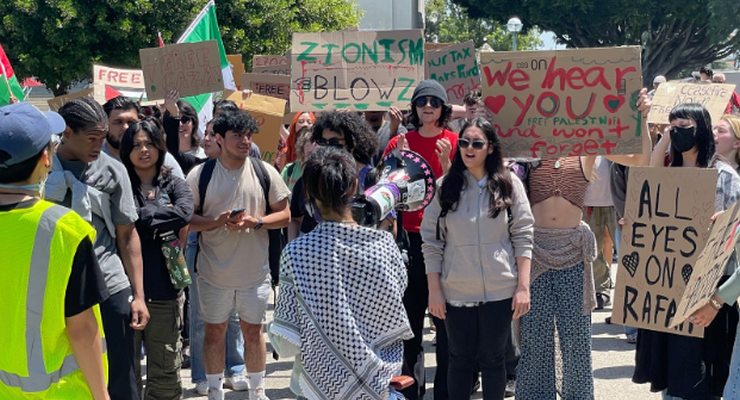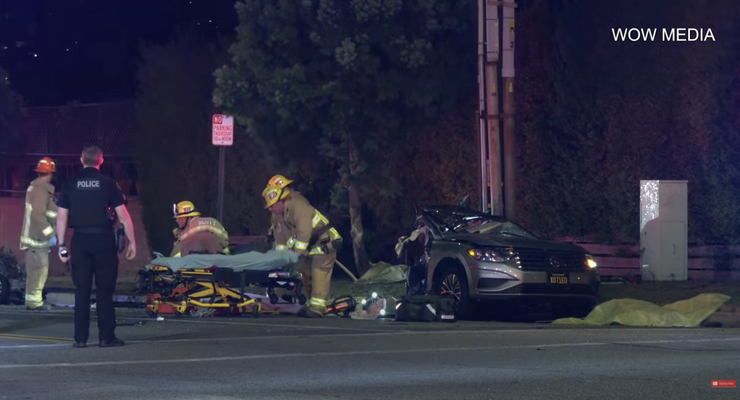
Opponents of the Pasadena Non-Potable Water Project a pipeline to transport non-potable water from Scholl Canyon Landfill in Glendale to the west side of Pasadena along Afton Street, Linda Vista Avenue, Laurel Street, Parkview Avenue, Arroyo Boulevard, and Rose Bowl Drive — may have achieved just the slightest bit of wiggle room in their quest for an alternative route for the project.
Following a presentation by Gary Takara of the City Public Works Department to the City Municipal Services Committee Tuesday evening, a presentation that Mayor Terry Tornek described as a “dress rehearsal” before an upcoming presentation to the full City Council, a number of local residents from the area spoke up against the project, many reiterating complaints aired since the project was first proposed.
The project faces a quickly shortening timeline in order to qualify for state funds necessary to its completion, as Takara and others in Public Works have stated more than once over the past year. In February, 2016, following approval of the Environmental Impact Report for the project, a Pasadena Water & Power staff report recommended that the EIR be passed immediately in order to take advantage of a number of grant applications, which have already been submitted in partially-complete form.
According to Shari Thomas, PWP interim general manager at the time, grant funding opportunities necessary to fund the actual construction of the pipeline are limited, and offered on a first-come, first-served basis, and all require a complete EIR.
“Time is a consideration for us,” she said then. ‘We have several grant applications in progress.”
A year later, the project is even closer to falling out of a State funding queue, given the slow pace of the project’s approval process. The project was placed on an eligibility list in December, 2015, which would cover 35% of the costs through a grant and an additional 65 percent through state loans. Any changes in the EIR, such as alternative routes, would only endanger the project further, said a PWP staff report.
On February 22, 2016, the City Council certified the Environmental Impact Report (“EIR”) for the Pasadena Non-Potable Water Project (“Project”) and directed staff to return with additional analysis for two alternative pipeline routes prior to awarding any contracts for the Project, according to a PPW staff report.
The direction was in response to numerous concerns expressed by Pasadena residents during the public comment period, regarding impacts from construction of Phase I of the Project, including potential damage to existing trees as well as issues of noise, traffic, dust and limited access to properties along the planned pipeline route, the report noted.
Councilmember Steve Madison is also on record as against the plan’s proposed route. A statement from his office last February said, “This project has significant impacts for the Linda Vista neighborhood. Councilmember Steve Madison supports an alternate route that will take the pipeline away from some of the residential streets.”
Pasadena Water and Power and RMC Water and Environment, the consultant responsible for the design of the project, completed an evaluation of the two alternative pipeline routes suggested by some residents, including one that used Salvia Canyon as a preferred route. The evaluation concluded that, while both the original route and the alternative routes pose “less than significant” environmental impacts, the approved routes are “superior to the alternative routes mainly in terms of cost and project duration.”
While it was noted that there are more trees along the approved routes, it was the opinion of the Project’s certified arborist that construction along these routes poses low potential for impact to trees, including the Canary Island Pine trees on Laurel Street, the staff report noted. The durability of the trees has been a subject of debate between PWP staff and local residents.
Local resident and activist Nina Chomsky of the Linda Vista Allendale Association, continued to take issue with the arborists’ report, saying that her organization would be willing to hire its own arborist to monitor the construction, but also continued to protest the validity of the Department’s EIR.
But, “after considering all the public comments, findings of the reports, requirement of revising the CEQA documents if approved route(s) were changed and the current status of the application for grants and loans; in the overall interest of the Pasadena community,” PWP will continued to pursue the Phase I alignment which was approved by the City Council upon certifying the EIR.
Tuesday’s committee presentation was the precursor to a fuller presentation to the council, based on the Council’s direction.
Local resident and engineer Ken Kules also protested possible levels of Total Dissolved Solids (TDS) in the water being transported and eventually used for irrigation. TDS are the total amount of mobile charged ions, including minerals, salts or metals dissolved in a given volume of water, expressed in parts per million (ppm)
In a letter to the Committee, Kules quoted a memo from PWP staff, which read “Pasadena Water and Power has proposed the Pasadena Non?Potable Water Project which involves the installation of a new non?potable water distribution system to deliver recycled water and local stream water for direct use to customers within the Monk Hill and Pasadena subareas. Pasadena Water and Power has estimated that upon full buildout, there will be a recycled water demand of 2,700 acre feet per year for direct use irrigation between the Monk Hill and
Pasadena subareas. Assuming that 10 percent of irrigated recycled water percolates to the groundwater table, approximately 270 acre feet per year may contribute to loading in the Raymond Basin, which should fall within the Policy’s recommendation for a single project to utilize less than 10 percent of the available assimilative capacity.”
According to Kules, this means that one of three events will occur: TDS will remain where they are, and rainfall will ultimately cause the TDS to leach downward, Kules said.
The second scenario is that TDS will wick upward to the surface. This would cause surface soils to accumulate salt levels that would be detrimental to plant growth, and common irrigation practice is to apply sufficient water to keep this from occurring, according to Kules. The third scenario is that the TDS will leach downward. According to Kule’s analysis, seasonal precipitation will transport TDS that is suspended in the unsaturated zone between the soil surface and groundwater to the groundwater table.
Finally, the evaluation report concluded that, “taking into account overall construction challenges, change order risk, operations and maintenance cost, capital costs, and risk of schedule delay and loss of funding, the Approved routes are superior to the Alternative routes.”
The report added that if one or both the Alternative pipeline routes are selected, CEQA will have to be revised and approved by the City which may take approximately four to five months, creating a window of 30-day statute of limitations period when the validity of the CEQA documents can be challenged. In other words, the funding clock is ticking quickly.
While Tuesday’s report was an “information only” presentation, and no action could be taken, Committee members were slow to dismiss the protests, and clearly left the door open for a more thorough discussion of alternative routes when the item comes before Council.













 0 comments
0 comments


